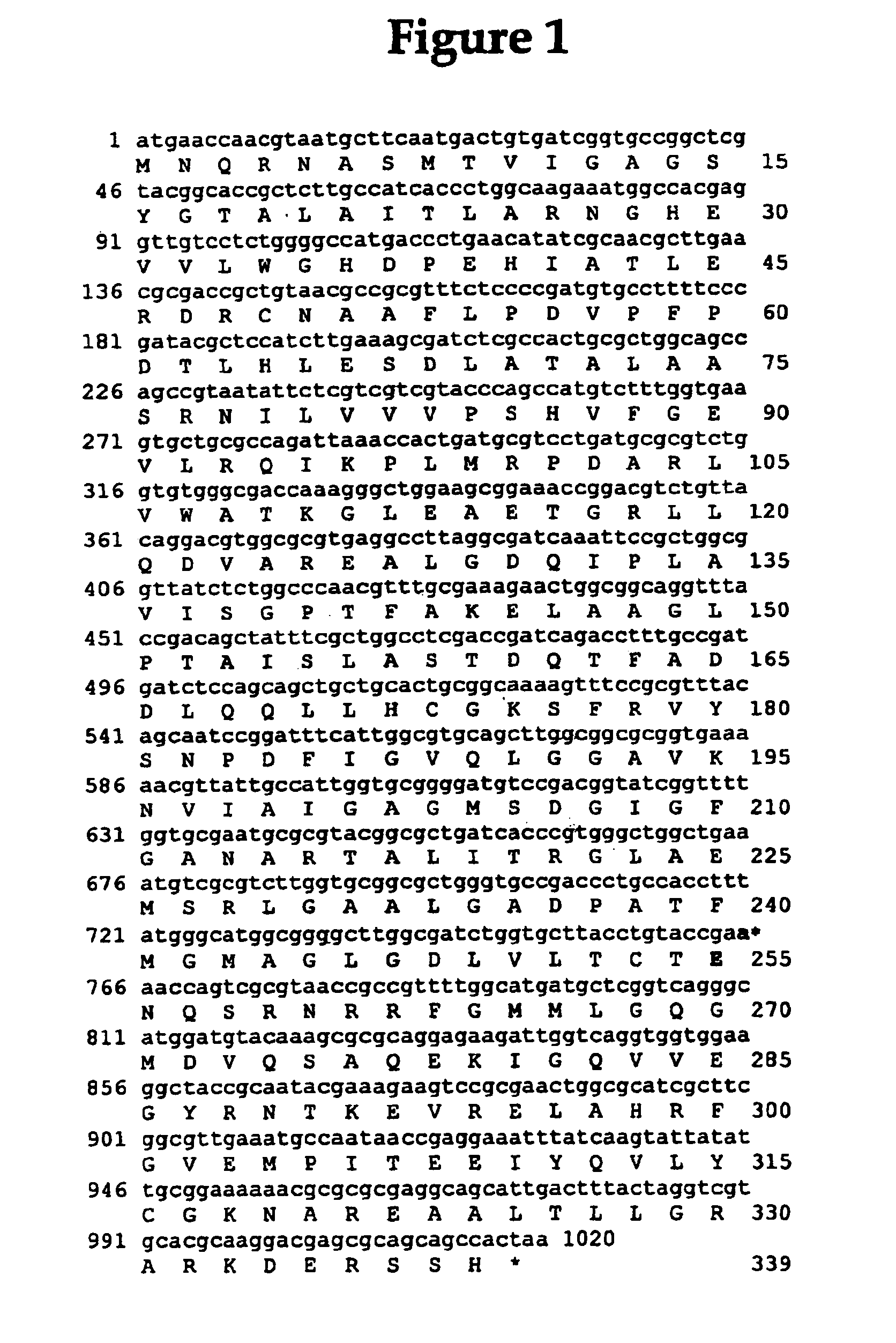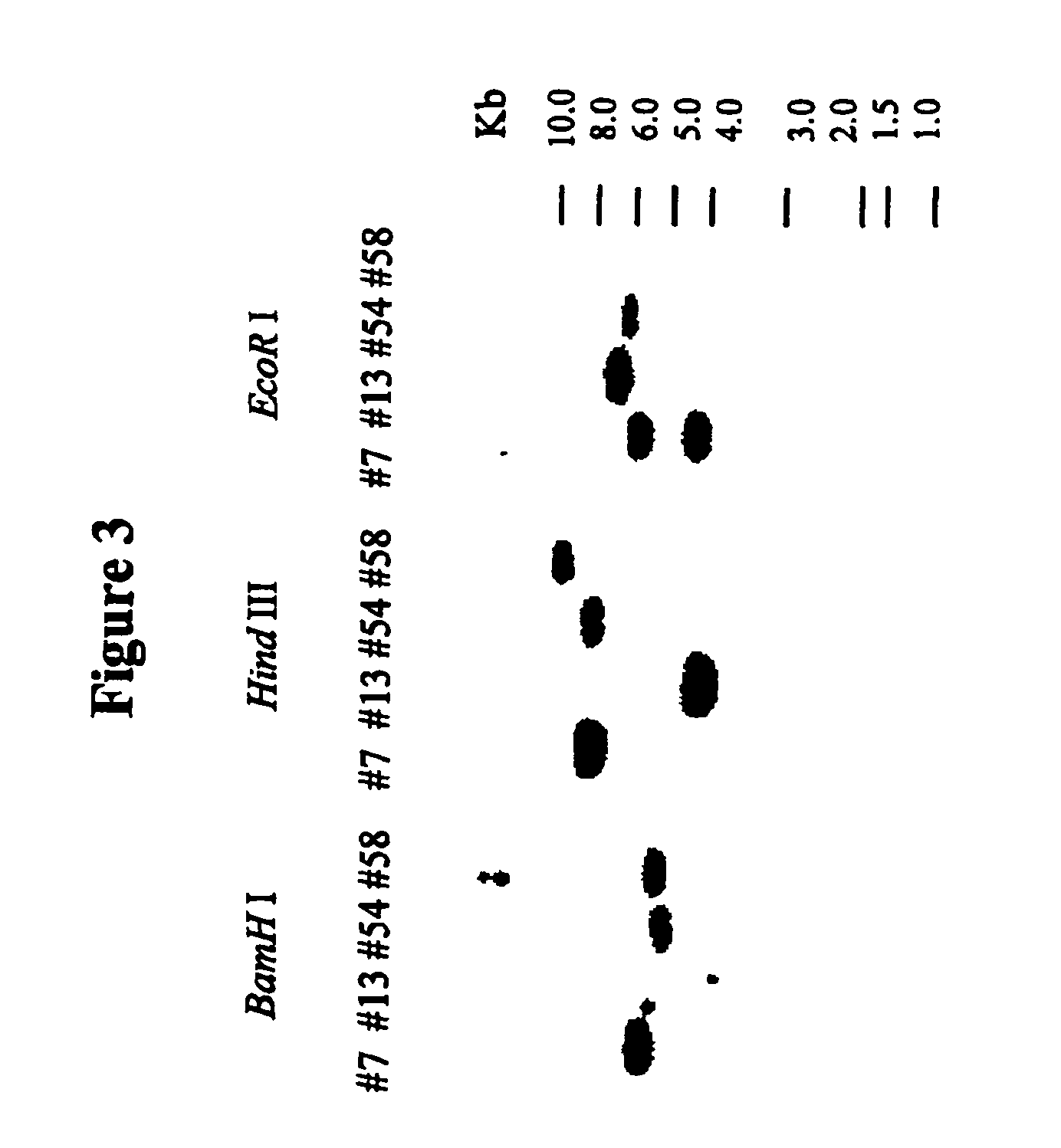Methods of producing and growing plants having improved phosphorus utilization
a technology of phosphorus utilization and transgenic plants, applied in the field of biotechnology, can solve the problems of 80% of the p from the fertilizer lost, the amount of phosphorus in the soil may be high, and the inability to meet the needs of plant uptake, so as to improve the production of glycerol and/or glycerol-3-phospha
- Summary
- Abstract
- Description
- Claims
- Application Information
AI Technical Summary
Benefits of technology
Problems solved by technology
Method used
Image
Examples
example i
Molecular Biological Techniques
[0069]For a general description of some of the techniques used, see Ausebel et al. Current protocols in Molecular Biology, Vols 1, 2, 3, (1995) New York: Wiley, incorporated herein by reference.
example ii
Identification of the Point Mutation of the gpsA2FR Gene from E. coli Strain BB26R
[0070]In order to investigate the structure of the gpsA2FR gene, the inventors synthesized two primers, TTAGTGGCTGCTGCGCTC (GPSA3, SEQ ID NO: 3) and AACAATGAACCAACGTAA (GPSA5, SEQ ID NO: 4), complementary to the sequences corresponding to the 3′ and 5′ end of the gpsA gene, respectively. PCR amplifications were performed with template DNA isolated from wild type E. coli K12 and from strain BB26R, respectively. The BB26R strain harboring the gpsA2FR allele can be obtained according to Cronan et al. The PCR products were purified with QIAquick™ PCR purification Kit (Qiagen™) and fully sequenced. The sequences of gpsA (wild type) and gpsA2FR (mutant) were compared through sequence alignment using the computer program DNAstar™.
example iii
Construction of a Plant Transformation vector for gpsAFR
[0071]Primers GAGAGCTCTTAGTGGCTGCTGCGCTC (GPSA31, SEQ ID NO: 5) and GAAGAAGGATCCAACAATGAACCAACGTAA (GPSA51, SEQ ID NO: 6) were designed according to the sequence of gpsA2FR. At the 5′ end of GPSA31, a SacI restriction site was added, while a BamHI restriction site was added at the 5′ end of GPSA5. The primers were used to perform PCR amplification of the gpsA2FR sequence. The PCR products were purified with QIAquick™ PCR purification Kit (Qiagen) and digested with SacI / BamHI. The SacI / BamHI digested gpsA2FR DNA fragment was subsequently inserted into the Agrobacterium binary vector pBI121 (Clontech) to replace the SacI / BamHI region covering the GUS gene. The resultant plant transformation vector is designated as pGPSA-VI (deposited Aug. 31, 2000, at the American Type Culture Collection, 10801 University Blvd., Manassas, Va. 20110-2209, accession no. PTA-2433). The gpsA2FR gene expression cassette in pGPSA-VI contains the gpsA2...
PUM
| Property | Measurement | Unit |
|---|---|---|
| molar ratio | aaaaa | aaaaa |
| temperature | aaaaa | aaaaa |
| adsorption | aaaaa | aaaaa |
Abstract
Description
Claims
Application Information
 Login to View More
Login to View More - R&D
- Intellectual Property
- Life Sciences
- Materials
- Tech Scout
- Unparalleled Data Quality
- Higher Quality Content
- 60% Fewer Hallucinations
Browse by: Latest US Patents, China's latest patents, Technical Efficacy Thesaurus, Application Domain, Technology Topic, Popular Technical Reports.
© 2025 PatSnap. All rights reserved.Legal|Privacy policy|Modern Slavery Act Transparency Statement|Sitemap|About US| Contact US: help@patsnap.com



